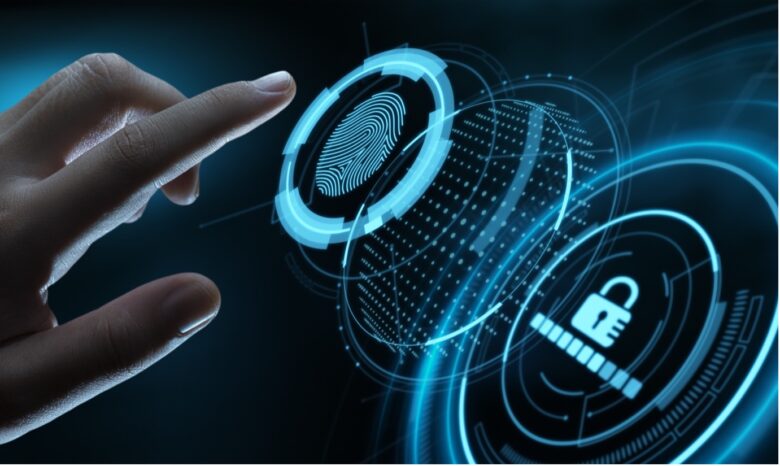With technology developing at a rapid pace, keeping our homes safe has become our main goal. Biometric solutions that are smarter and more dependable are gradually replacing conventional security measures like locks and keys. Biometric home security systems use each person’s unique physical or behavioral characteristics to make them more accurate and secure. This article discusses various biometric home security options, their pros and cons, and the future of this rapidly evolving technology.
1. Use Biometrics to Keep Your Home Safe:
Fingerprint Identification
Fingerprint recognition is one of the oldest and most popular biometric technologies currently used in home security systems. Modern fingerprint sensors are highly accurate because they use complex algorithms to find and analyze each person’s unique fingerprint pattern. Homeowners can now use their fingerprints to open doors and safes and even control who has access to certain areas.
Facial recognition
Facial recognition technology has become extremely popular in recent years. After being used in smartphones and other smart devices, it is now being used in home security systems. Facial recognition allows homeowners to let people in based on their facial features, making things safer and easier. However, there are concerns about privacy and possible misuse.
Scan
Scan the colored part of the eye (the iris) to capture the unique pattern. This technology is known for its accuracy and reliability. Iris scanning adds an extra layer of security to home security systems because everyone’s iris pattern is very different. However, the high cost and difficulty in setting up iris recognition prevents it from being widely used.
Speech Recognition
Speech recognition technology looks for the unique characteristics of a person’s voice and lets them in. An increasing number of home security systems can recognize your voice, making it easy to control access without using your hands. However, for optimal performance, issues such as background noise and changes in speech patterns must be addressed.
2. Benefits of Biometric Home Security Solutions:
Better Security
When it comes to security, biometric authentication is better than traditional methods such as PINs or passwords. Because each person’s biometrics are unique, the chance of someone gaining access without permission is much smaller. This makes your home safer overall.
Convenient and Easy-to-use Experience
Biometric systems make use easier and more convenient. Homeowners can easily enter their homes without carrying keys or remembering complex passwords. All they have to do is touch, look, or say a command. This ease of use is very attractive to users of all ages.
Non-Repudiation
With biometric authentication, it is impossible to deny who someone claims to be. This feature is important for situations where accountability is required, such as secure access logs or household financial transactions.
Register Time and Attendance
Some advanced biometric systems can be added to home automation to always keep track of where and when each family member is. This feature allows you to monitor your home’s daily routine, security, and even energy consumption.
3. Challenges and Considerations:
Privacy Concerns
There are significant privacy concerns with the collection and storage of biometric data. Homeowners must make sure that their biometric data is secure and out of the reach of unauthorized individuals. New laws and regulations are being developed to address these issues and ensure responsible use of biometric data.
Costs for Implementing the Plan
Although it is easier to obtain biometric technology these days, some people still cannot afford to set up a biometric home security system in the first place. Homeowners looking to adopt this technology may want to consider how much it will cost to purchase and install high-quality biometric equipment.
Positive and Negative False Positives
Biometric systems do not always work properly and can produce false positives or false negatives. Injury, changes in appearance, or changes in the environment can all affect how accurate biometric authentication is. Algorithms are getting better, so these errors will become less and less common.
Standardization and Interoperability
With so many biometric solutions on the market, standardization and interoperability across different devices and platforms remains elusive. Ensuring that all the different parts of your home security work together and communicate seamlessly with each other is important for a complete and effective solution.
4. Future Prospects and Innovations:
Multiple Forms of Biometric Identification
Combining multiple types of biometrics is the future of biometric home security. For example, combining fingerprint recognition, facial recognition, and voice recognition can make authentication more accurate and reliable and security systems more powerful.
Biometric Device You Wear
Biometrics is becoming part of an increasingly sophisticated set of wearable technologies. Wearable technology such as fitness trackers and smartwatches can be used to monitor and authenticate people based on their unique physical or behavioral characteristics. This makes home visits safer.
Blockchain Securely Stores Biometric Data
Due to privacy concerns, blockchain technology is seen as a way to store biometric data in a secure and decentralized manner. This approach gives users more control over their private data and ensures that biometric data is processed clearly and responsibly.
AI and Machine Learning
Adding machine learning (ML) and artificial intelligence (AI) to biometric systems can be very useful. Over time, these technologies will change and improve, making authentication more accurate and reducing the number of false positives and false negatives. Continuous learning algorithms also help the system detect and adapt to changes in biometrics.
Conclusion
Biometric home security solutions are an exciting new step in the evolution of smart homes. Biometric technology has some issues that need to be addressed, but its benefits, ease of use, and continued improvements make it a good choice for homeowners looking for high-tech security. As technology continues to develop, biometric home security will likely become easier to use, more reliable, and a part of our everyday lives. This will make families around the world safer in the future.
FAQs
1. What is biometrics in terms of home security?
The use of unique physical or behavioral characteristics, such as fingerprints, facial features, iris patterns, or voices, to identify and allow people into a home security system is called biometrics.
2. How does fingerprint recognition help you ensure the security of your home?
Fingerprint recognition uses complex algorithms to capture and analyze the unique patterns of each fingerprint. This allows people to use their fingerprints to unlock doors and safes or control access, and it works very well.
3. What role does facial recognition play in home security systems?
Facial recognition technology allows homeowners to let people in based on their facial features. This is a safe and easy way to enter your home. However, there are concerns about privacy and possible misuse.
4. How can iris scanning make your home safer?
An iris scan records the unique pattern of the iris, making it a very personal and unique biometric. While it makes things more secure, the cost and difficulty of setting it up keep many people from using it.
5. What is speech recognition technology? How does it help keep your home safe?
Speech recognition looks at the unique properties of someone’s voice and lets them in. Home security voice recognition systems allow you to control access hands-free. However, issues such as background noise need to be addressed.
6. Why is a biometric home security system a good idea?
Biometric solutions allow you to be more secure, save time, and use them more easily. They make lying impossible, record time and attendance and eliminate the need for old-fashioned methods such as passwords and keys.



